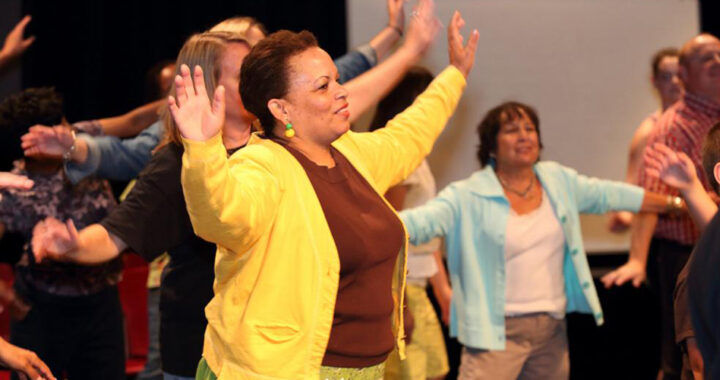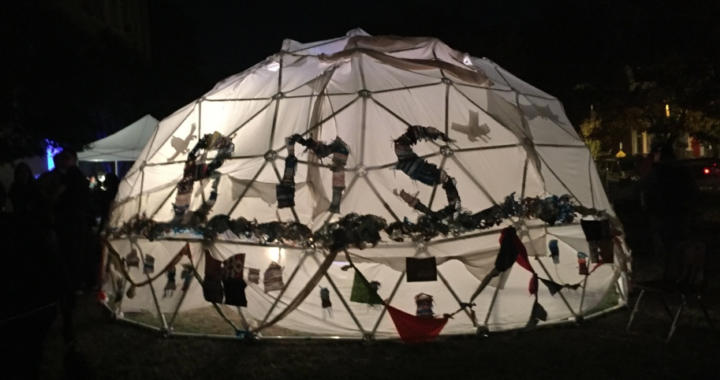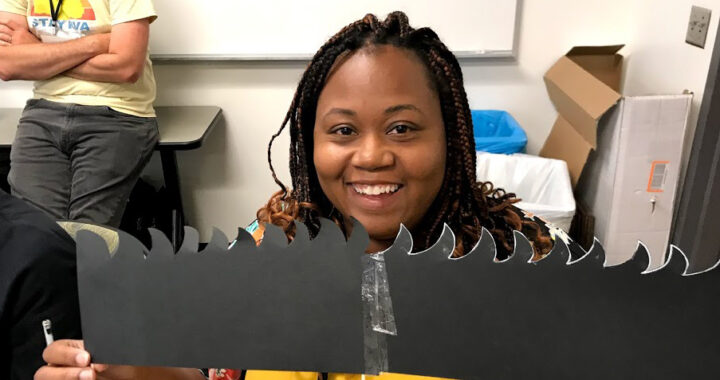Kira Jersild is a 7th and 8th grade English teacher at Binford Middle School. Kira completed the Arts Integrated Learning Certificate (AILC) with Partners in the Arts (PIA). With her teacher cohort, Kira gained many valuable skills to integrate the arts into her classroom.
An Arts-Integrated Curriculum
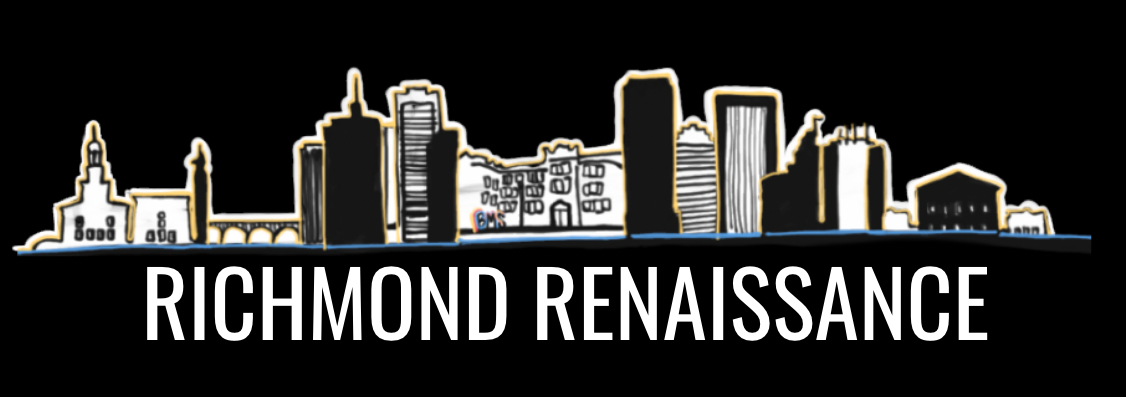 Partners in the Arts helped to evolve Kira’s understanding of arts integrated learning. Kira attended an arts high school, which included the use of art on top of the traditional subject areas. PIA showed Kira how to use arts within the curriculum, not just as a bonus. PIA training helped her see how and why to use an integrated arts approach in the classroom. She now has a deeper understanding of how to teach students by taking a deep dive into different art forms and applying them to the academic material.
Partners in the Arts helped to evolve Kira’s understanding of arts integrated learning. Kira attended an arts high school, which included the use of art on top of the traditional subject areas. PIA showed Kira how to use arts within the curriculum, not just as a bonus. PIA training helped her see how and why to use an integrated arts approach in the classroom. She now has a deeper understanding of how to teach students by taking a deep dive into different art forms and applying them to the academic material.
In one class project, the Richmond Renaissance, 7th graders created a virtual museum exhibit in Google Slides. Each student selected a piece of art from the Harlem Renaissance period of African American art and recognition from the 1910s-1930s. Pieces included songs, sculptures, poetry, and paintings. Students drafted a curator’s statement and then created their own original art in response. The project utilized the students’ knowledge of Richmond history as well as their creativity to adapt to an online platform for art. Project resources can be found on Instagram here.

Process over Product
As we discussed how the arts can be used in classrooms, I began to consider how art can be graded. Kira shared how it took time for her to adopt different rubrics for different mediums. Although it is more challenging to grade an art project than a standard English essay, Kira saw how her students were benefiting from arts-based assessments and pushed herself to learn more.
Kira suggested that one reservation teachers have towards arts-based assignments and projects is that they are afraid to tell a student that their creation is not worthy or not good enough. However, PIA helped Kira build tools to effectively grade art. In doing so, she saw how grading art is much more about the process than the final product.
She gave the example of a student choreographing a dance for a final project. The tempo, music, steps, and transitions the student chose to include all reflected their understanding of the topic. Consider a dance as an assessment for a science class, where a student may use tempo to represent the rate of atoms moving, or recreate the movement through steps. These choices ultimately demonstrate what the student has learned through art as the assessment form. Kira said it is important “not to judge from an objective or subjective point of view, rather why did you make this choice and how does it relate?” She looks at the whole picture of the art project, from start to finish. When grading arts assessments, Kira often works with the art teachers at Binford to collaborate on rubrics. These allow her to consider all areas of the art form for representation of the student’s creative learning process.
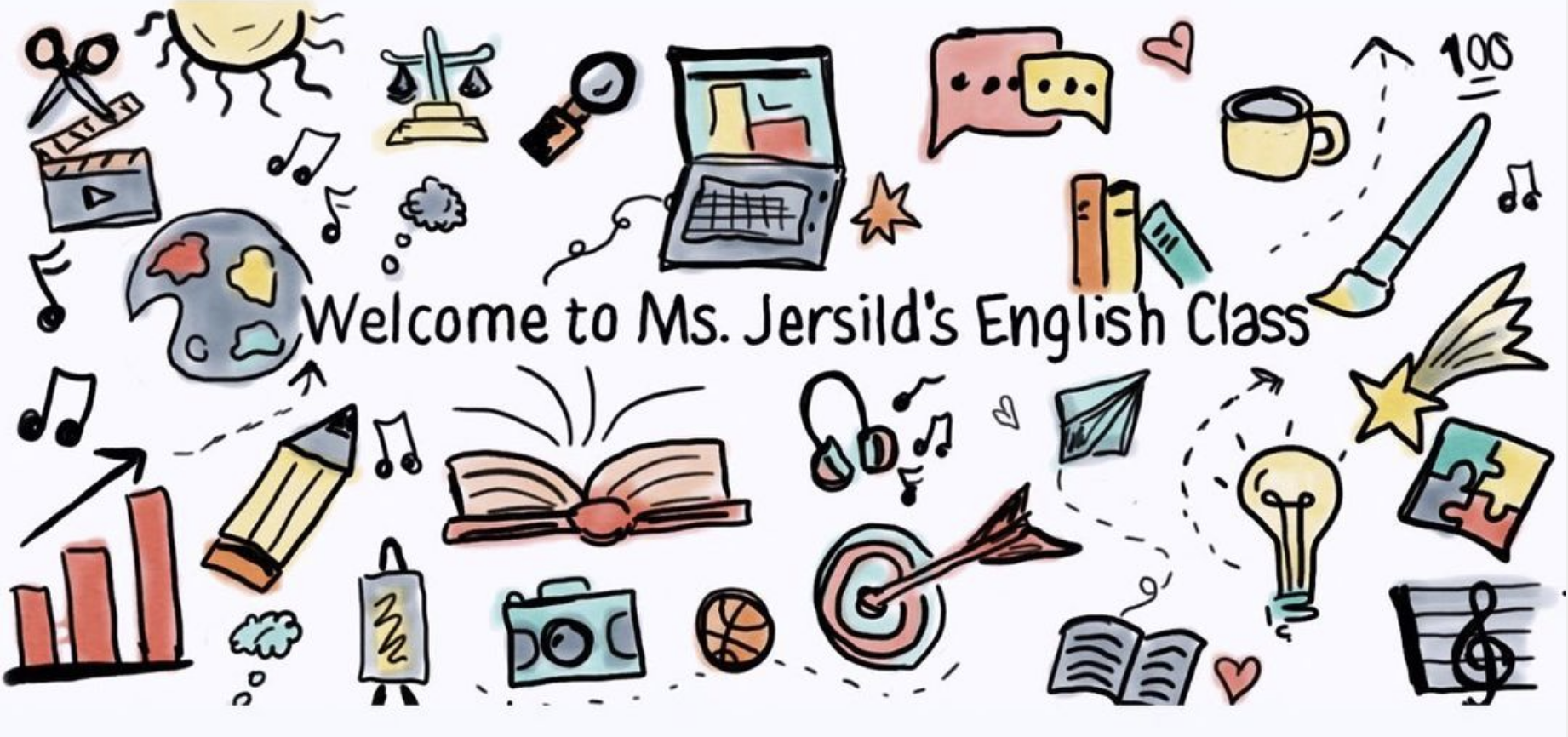
Doodles by Ms. Jersild for her class site
Arts and Assessment
The use of art as an assessment tool is extremely beneficial to the students, and the work Kira did to refine her arts integrated teaching skills inspired teachers to assess understanding through art. Kira’s biggest takeaway from working with PIA was the impact it had on teachers. She expressed how arts integrated teaching prevents teachers from burnout by asking them to learn along with their students. Kira believes all teachers, regardless of arti
stic ability, should work with Partners in the Arts and attend the Joan Oates Institute summer course. Kira emphasized the supportive and exciting community she became a part of as another lasting benefit. The use of art as an assessment tool will become more important as instruction evolves in a post-pandemic era.
This is a guest post by University of Richmond senior Kat Mitchell, who spent a semester with Partners in the Arts through an independent study and internship. Kat studied Leadership and Education & Society, and is passionate about equity in education and advancing knowledge of the world around us.
